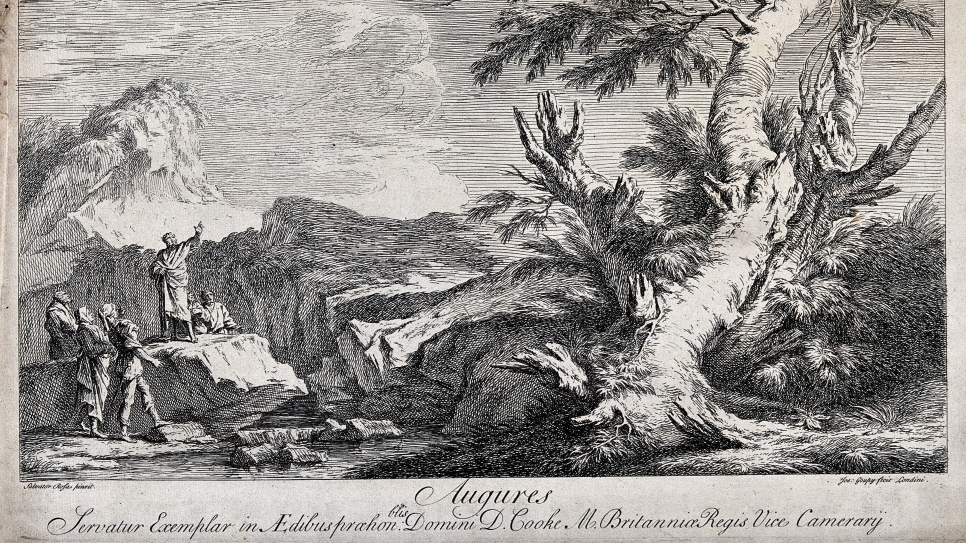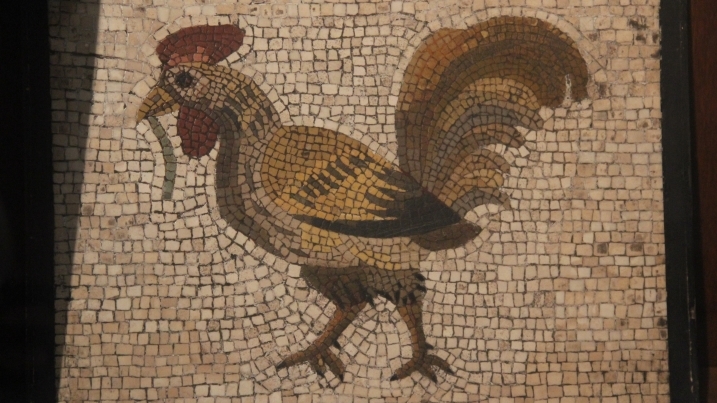Can birds tell us the future?

Can birds predict the future? The Ancient Romans certainly believed they could!
The practice of ornithomancy (divination using the behaviour of birds) dates back to Ancient Greek and earlier cultures and was adopted by the Romans as an important part of their augury (omen reading) practices used in predicting the future and outcomes of decisions. The practice of auspicium (‘taking the auspices’ i.e. looking at birds as omens) dates back all the way to the origins of Rome: in the legends of the founding of Rome by Romulus and Remus, the location of the city was in fact decided based on the behaviour of vultures.
Taking the auspices was an integral part of Ancient Roman culture. Decisions all the way from the appointment of any magistrate to the advancement of any military campaign always required a positive auspicium as it was seen as a sign that the decision was in agreement with the gods – “Aves admittunt!” – “the birds allow it”! All birds and animals were taken as omens and in general the rarer the species in the area in which the auspices were taken, the greater the significance of the omen. Within the practice of Roman augury, two main bird behaviours were observed: flight and bird calls. Generally, only certain species of birds were used for each: alites (birds observed in flight) were mainly eagles, vultures and osprey, while oscines (birds whose calls were observed) were typically owls, ravens and crows.
The Roman politician Cicero wrote in great detail on the practices of taking the auspices in his work On Divination and within it he emphasised that the most important aspect of an omen is the direction from which it comes. Facing south, the flight of birds on the left (east) or in front (south) was regarded as favourable, whereas birds approaching from the right (west) or behind (north) were regarded as unfavourable. The same was often true for bird calls, although interestingly it was seen as favourable if a crow called from the left yet favourable if a raven called from the right.
If wild birds were unavailable to divine from, then there was also the practice of alectryomancy – divination using chickens – as an alternative. Usually, the chicken was placed inside a circle of grain around which were placed all the letters of the alphabet. As the bird pecked the grain, the letters closest to where the bird pecked were gathered and arranged to make words to answer specific questions. If a simple yes or no was required, then only two piles of grain were used. This practice was used extensively throughout Rome, most notably as a method of identifying robbers!

A Roman mosaic of a cockerel
The Roman army also practiced a variation of alectryomancy by consulting the sacred chickens that were carried along on their military campaigns before a battle. Feed was placed in a marked area and the chickens released – if the chickens ate the food so voraciously that some of it fell from their beaks, it was considered an excellent omen, but if they were less keen about the feed, it was necessary to be cautious with any strategic decisions.
If you fancy having a go at ornithomancy then there are certain basic behaviours you can observe when birdwatching (accuracy of predictions may vary!):
- Flying horizontally indicates that you will reach your goals but there will be hardships along the way.
- A bird flying straight towards you indicates that your situation will improve and that fortune and happiness lie ahead.
- Flight that is both high up and fast, or vertical, indicates rapid and profound success.
- Landing and taking off several times or erratic flight patterns indicate a need for a change in plans due to unforeseen problems.
- Taking off but changing direction mid-flight indicates that flexibility will be needed as a change of circumstances may be on the horizon.
While we cannot guarantee that any chickens you may own will be able to accurately predict your future, observing the behaviours and flight patterns of birds can be an interesting addition to your usual day’s birdwatching – you never know what they may reveal to you!
Especially at this time of year at Caerlaverock, as summer starts to slowly (or not so slowly!) fade into autumn, the movements of birds tell us a lot about the changing seasons. The last of the summer sun seems to leave with the swallows as they make their way back south and the migrating geese and swans from the north are the sign that the colder weather and shorter days are coming. In a way, the movements of the birds are therefore telling us our future and, especially now in this time of climate crisis, the changes we can see in the migratory patterns of birds through the year act as a warning for a future that we must act to prevent.
Words by Rosie Siverns
Pictures used under Creative Commons license. Feature image comes from Wellcome Images, a website operated by Wellcome Trust, a global charitable foundation based in the United Kingdom. Refer to Wellcome blog post (archive).



